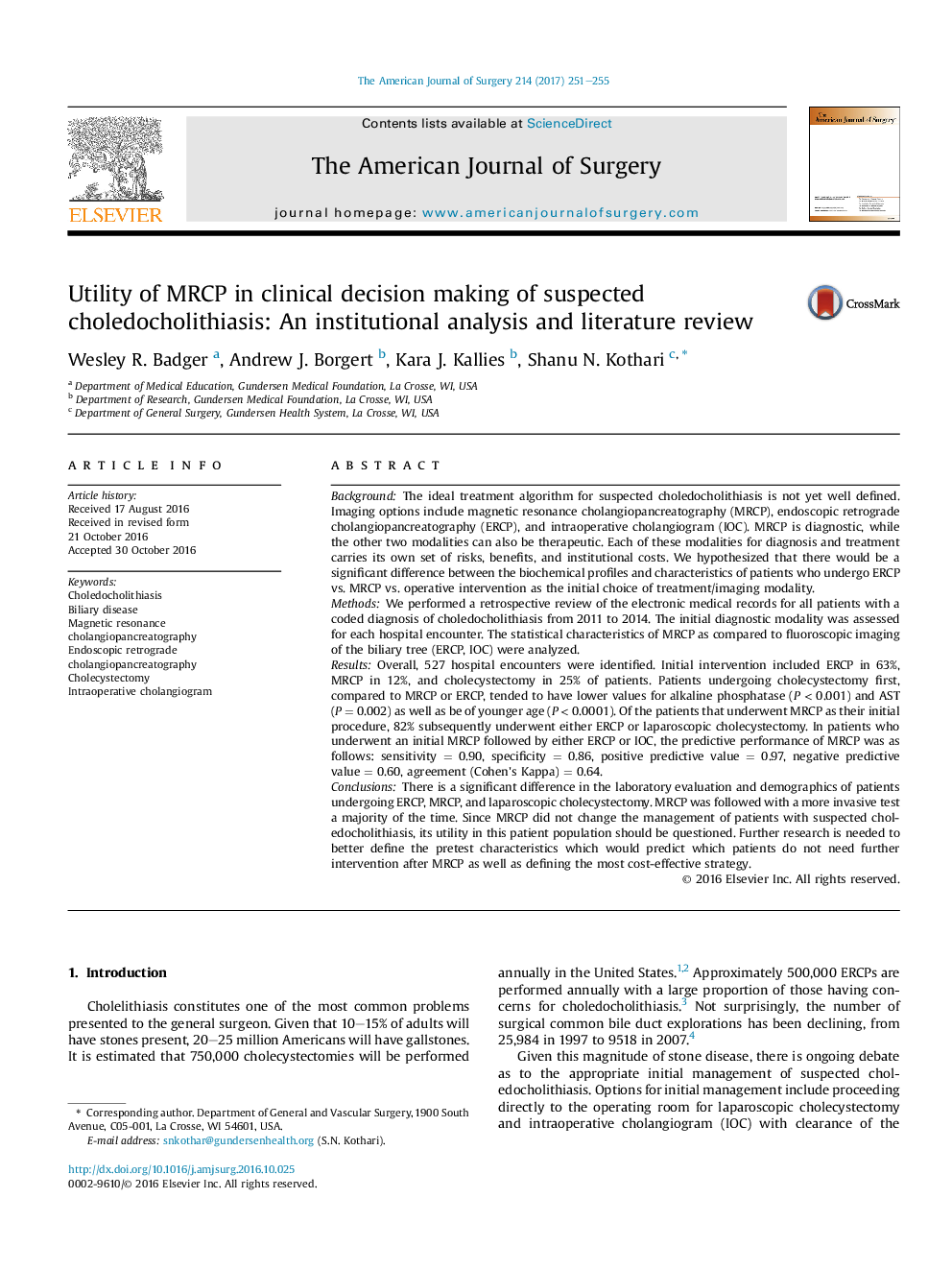| کد مقاله | کد نشریه | سال انتشار | مقاله انگلیسی | نسخه تمام متن |
|---|---|---|---|---|
| 5731015 | 1611468 | 2017 | 5 صفحه PDF | دانلود رایگان |

- The ideal treatment algorithm for suspected choledocholithiasis is not well defined.
- Laboratory values and demographics differed among patients undergoing ERCP, MRCP, and laparoscopic cholecystectomy for choledocholithiasis.
- MRCP did not change the management of patients, and its utility should be questioned.
BackgroundThe ideal treatment algorithm for suspected choledocholithiasis is not yet well defined. Imaging options include magnetic resonance cholangiopancreatography (MRCP), endoscopic retrograde cholangiopancreatography (ERCP), and intraoperative cholangiogram (IOC). MRCP is diagnostic, while the other two modalities can also be therapeutic. Each of these modalities for diagnosis and treatment carries its own set of risks, benefits, and institutional costs. We hypothesized that there would be a significant difference between the biochemical profiles and characteristics of patients who undergo ERCP vs. MRCP vs. operative intervention as the initial choice of treatment/imaging modality.MethodsWe performed a retrospective review of the electronic medical records for all patients with a coded diagnosis of choledocholithiasis from 2011 to 2014. The initial diagnostic modality was assessed for each hospital encounter. The statistical characteristics of MRCP as compared to fluoroscopic imaging of the biliary tree (ERCP, IOC) were analyzed.ResultsOverall, 527 hospital encounters were identified. Initial intervention included ERCP in 63%, MRCP in 12%, and cholecystectomy in 25% of patients. Patients undergoing cholecystectomy first, compared to MRCP or ERCP, tended to have lower values for alkaline phosphatase (P < 0.001) and AST (P = 0.002) as well as be of younger age (P < 0.0001). Of the patients that underwent MRCP as their initial procedure, 82% subsequently underwent either ERCP or laparoscopic cholecystectomy. In patients who underwent an initial MRCP followed by either ERCP or IOC, the predictive performance of MRCP was as follows: sensitivity = 0.90, specificity = 0.86, positive predictive value = 0.97, negative predictive value = 0.60, agreement (Cohen's Kappa) = 0.64.ConclusionsThere is a significant difference in the laboratory evaluation and demographics of patients undergoing ERCP, MRCP, and laparoscopic cholecystectomy. MRCP was followed with a more invasive test a majority of the time. Since MRCP did not change the management of patients with suspected choledocholithiasis, its utility in this patient population should be questioned. Further research is needed to better define the pretest characteristics which would predict which patients do not need further intervention after MRCP as well as defining the most cost-effective strategy.
Journal: The American Journal of Surgery - Volume 214, Issue 2, August 2017, Pages 251-255